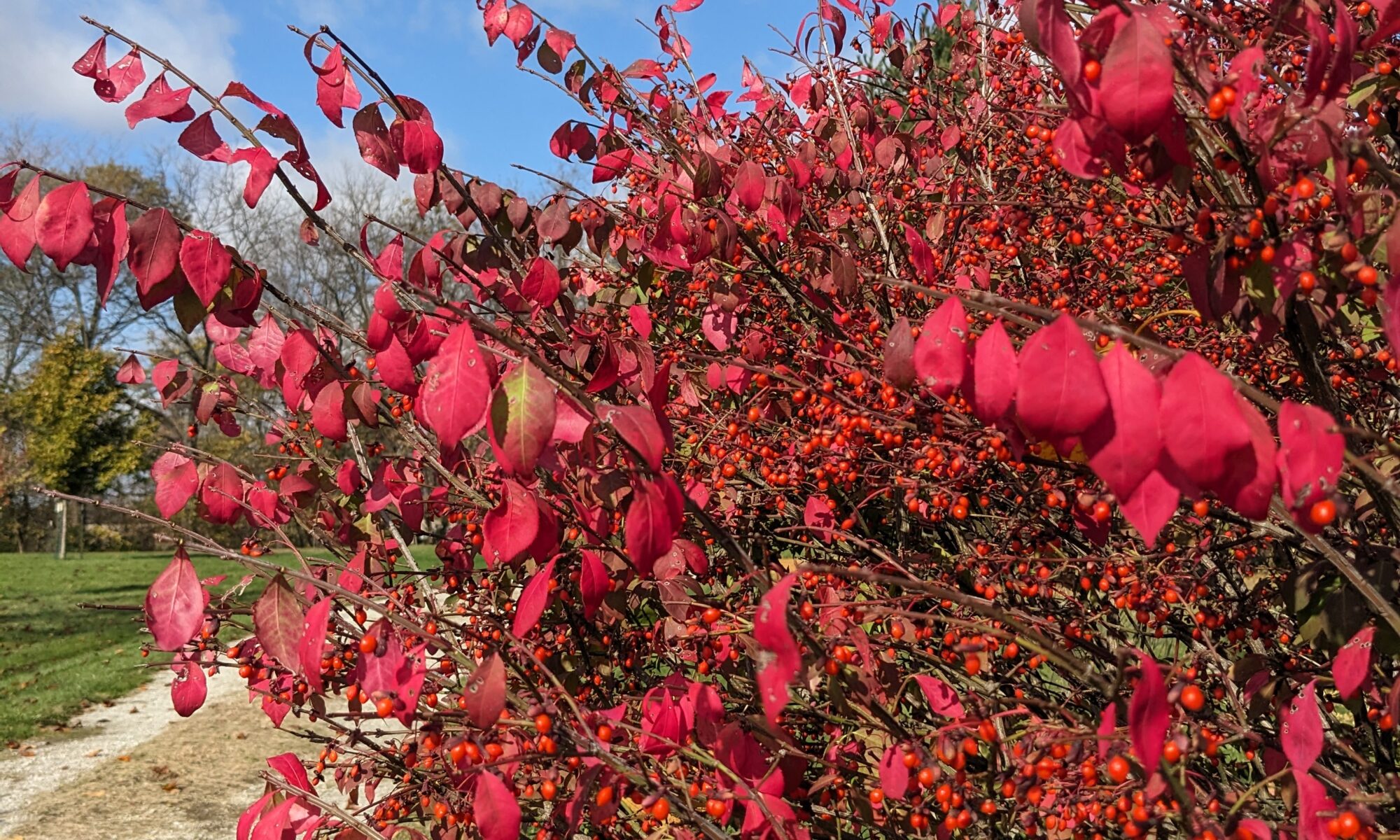Scarier than goblins, witches and ghosts are all the invasive plants we have planted in our yards and gardens! This Halloween we bring you a post about the horrors of invasive plants in your landscape.
Some of our Menard County Trails & Greenways members have already been hard at work on the restoration efforts at New Salem in recent weeks. With the arrival of cooler temperatures, we’ll be scheduling volunteer work days soon! Be watching our Facebook page or your email if you’re an MCTG member for those dates. If you’d like to contribute to our forest restoration efforts at New Salem, but you can’t make it to our work days, there is still something you can do to help: remove invasive garden plants in your own yard!
There are many problematic plants still being sold in garden centers for use as landscape plants and seeds from those plants end up growing at New Salem and in other natural areas. Here are some of the worst offenders:
Burning bush (Euonymus alata): This species is showing up more and more in the woods, and it’s easy to spot this time of year.
Seedlings aren’t identical to the parent. They vary from deep red to unusual shades of pink.
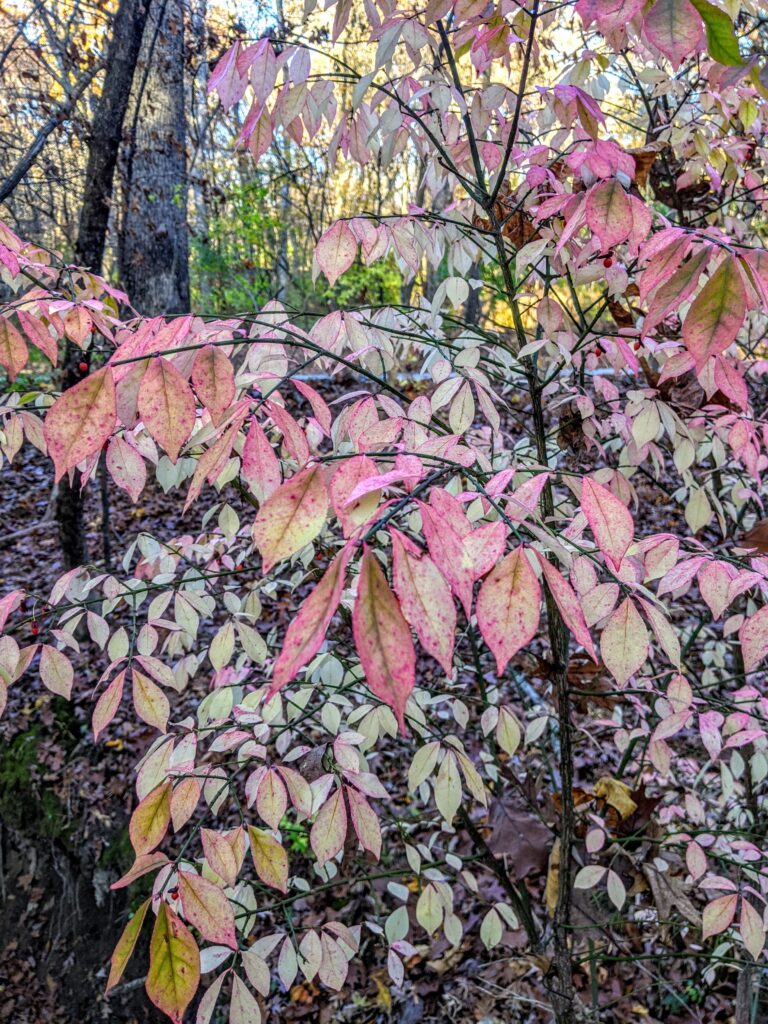
We frequently hear folks say, “it’s not invasive in my yard, so it can’t be a problem.” If you take a look at a burning bush right now, it’s loaded with seeds. These seeds can be consumed by birds, and then deposited wherever that bird decides to fly or roost.
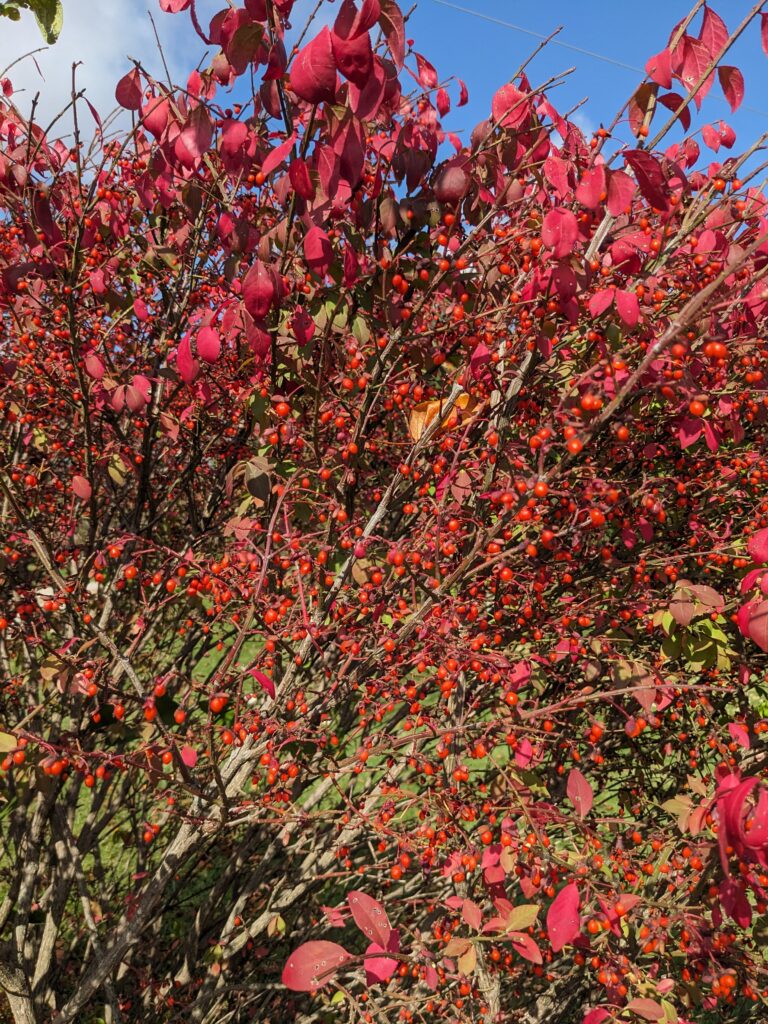
If you travel just a bit east, say to Indiana, this species is even worse than the bush honeysuckle, so it’s only a matter of time before we see the problem increase exponentially. Remember—there was a time that most of us can still remember when the woods were free of bush honeysuckle!!
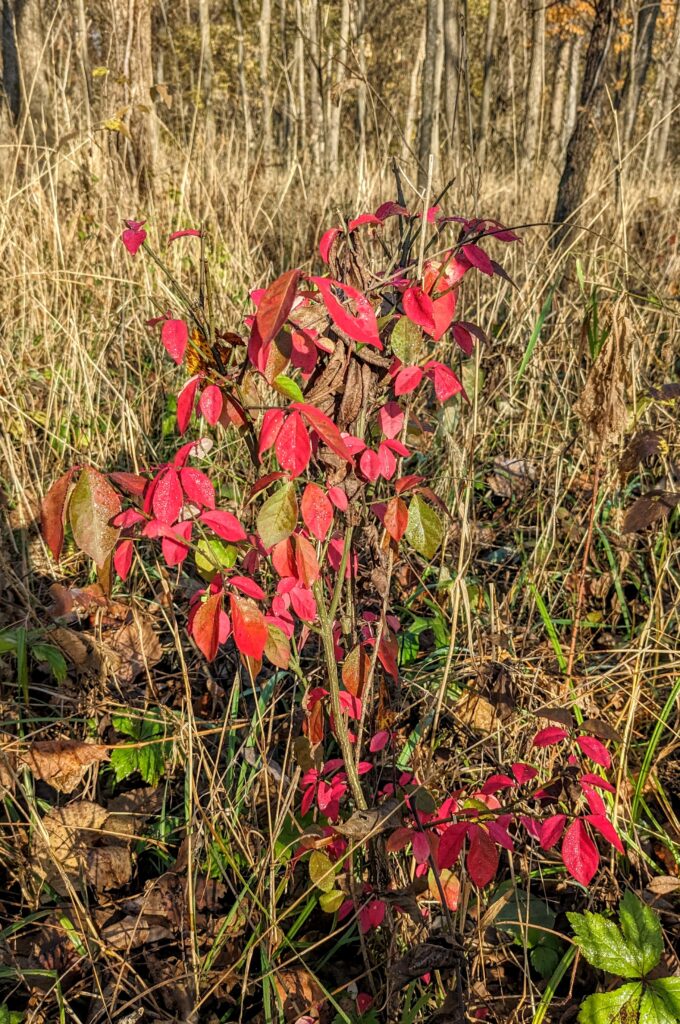
Bradford (Callery) pear (Pyrus calleryana): Once upon a time, these trees were marketed as being sterile. However, they were only sterile when the ‘Bradford’ selection was the only one on the market. Being clones (grafted), the trees couldn’t pollinate each other. Realizing ‘Bradford’ was particularly prone to splitting apart because of their poor structure, other selections of the same species were introduced such as ‘Aristocrat’, ‘White House’, and ‘Cleveland Select’. These genetically different selections could pollinate amongst each other readily.
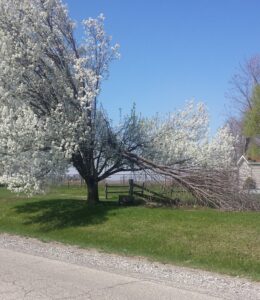
The birds then consume and spread the viable seed.
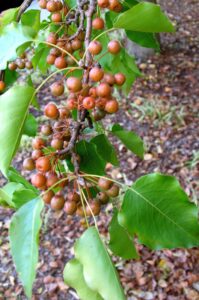
This species is rapidly colonizing all sunny open space. A field left unmowed or unburned for a couple years will quickly become a pear thicket. The seedlings revert to their thorny natural form and grow like a weed!
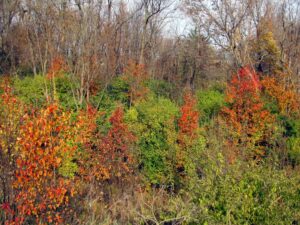
Next time you’re in Springfield, look at the open spaces along Veterans Parkway.
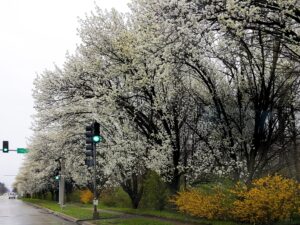
There is a scary amount of ornamental pear that only many hours of forestry mulching and herbicide application can cure! It’s easy to spot while the trees are in fall color, even more so when they bloom in the spring. If you’ve got one or more of these trees, do nature a favor, and make it into firewood ASAP.
Wintercreeper (Euonymus fortunei): You may have noticed a lot of this pesky plant invading the village at New Salem. Its evergreen foliage was a prized groundcover plant. Unfortunately, it works a little too well when it escapes into natural landscapes, choking out even the most aggressive native species.
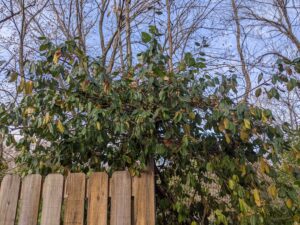
It’s bad enough when it sticks to the ground, but when it climbs trees, fence posts, buildings, or whatever it encounters, it will produce thousands of fruits, which—you guessed it—get consumed by birds to be spread far and wide.
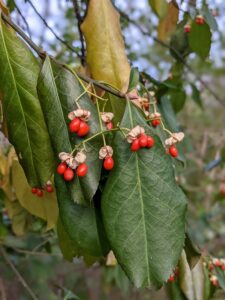
The climbing vine is also quite detrimental to the tree! If you can’t remove it right away, cut the climbing vines at the base of the tree to slow the spread by seed. If it’s in your landscape, keep it trimmed up so it can’t climb and don’t toss out the trimmings where they will likely re-root and spread unchecked.

This plant is particularly tricky to kill. Wherever it touches the ground, it often roots, so cutting and pulling alone can be a challenging means of removal. Herbicide is effective, but it often requires the use of a surfactant to help the liquid stick to the waxy leaves. For the removal of this plant and all invasive species, we highly recommend referring to the Management of Invasive Plants and Pests of Illinois.
Barberry (Berberis sp.): This shrub is commonly sold in an array of colors from deep green to chartreuse to variations of red and purple.
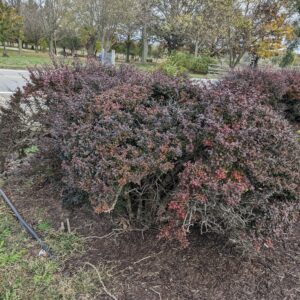
When we find it escaped, seedlings have usually reverted to green with those easy to spot bright red seeds.
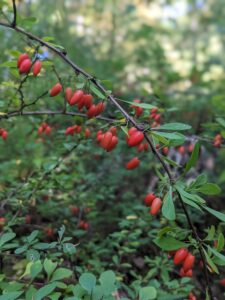
Like burning bush, it has been a huge problem in the slightly milder climates to our east, but we’re finding it more and more frequently in our work in the woods. It is also spread by birds from its very heavy production. As a seedling, it doesn’t grow as the compact “meatball” form you see in landscapes, but grows in a more sparse, arching form that spreads vegetatively.
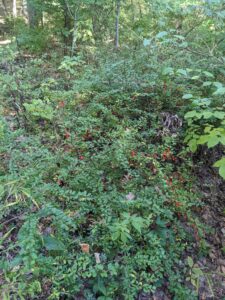
Studies have found that thorny barberry thickets make for perfect tick habitat, and if that’s not a reason to dump them, I don’t know what is!!
While you’re at it, don’t forget to remove the usual suspects like bush honeysuckle, autumn olive, multiflora rose, garlic mustard, and other well-known invasive plants from your yard. A good rule for choosing garden plants: if it can spread from your yard without your help, it should be native!
Looking for suggestions for replacements? We’ll give you some ideas in an upcoming post!

